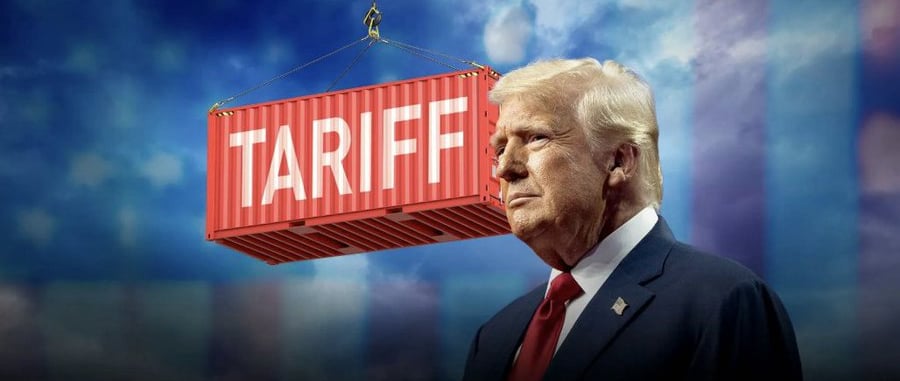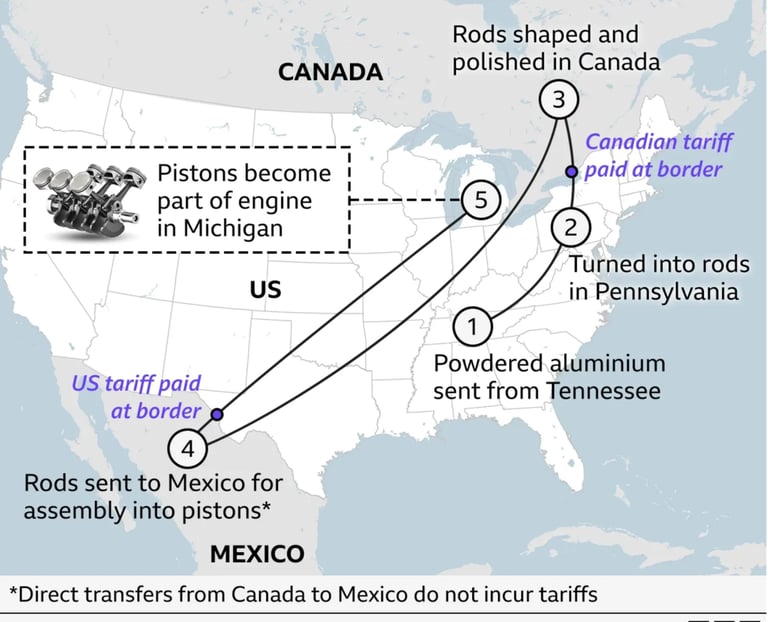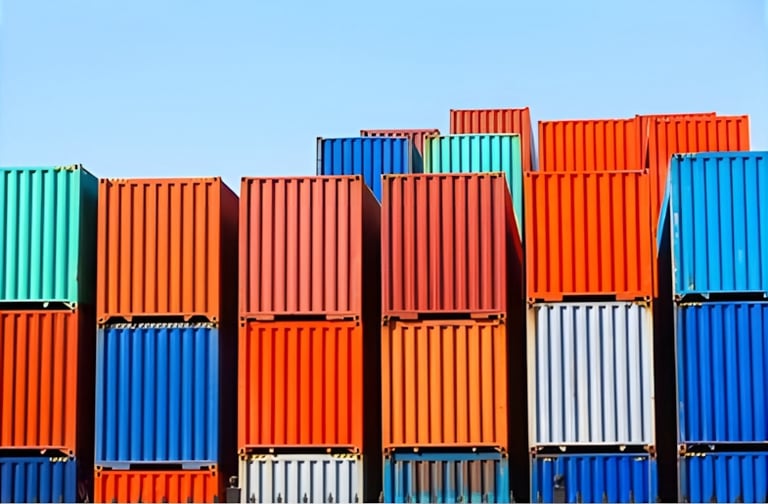Revving Up Trade Wars: How Trump’s Tariffs on China Are Shifting Gears in the U.S., Canada, Mexico—and Beyond
What happens when President Trump’s latest tariffs—aimed at both our North American neighbors and China—throw a wrench into this supply chain?
3/5/20258 min read


Picture this: You’re standing on the factory floor of a sprawling auto plant in Michigan, the hum of machinery filling the air as workers assemble engines for the latest pickup trucks rolling off the line. But before those engines roar to life, their pistons—those critical little components that keep everything moving—have already traveled thousands of miles. They start as powdered aluminum in Tennessee, get shaped into rods in Pennsylvania, polished to perfection in Canada, assembled into pistons in Mexico, and finally land here, ready to power American roads. It’s a wild, international road trip for a piece of metal! But here’s the kicker: What happens when President Trump’s latest tariffs—aimed at both our North American neighbors and China—throw a wrench into this supply chain? As of March 2025, I’m diving into how these policies are shifting the gears of trade, hitting wallets, and sparking a global debate.
The North American Piston Supply Chain: A Map-Based Road Trip
Let’s take a closer look at this piston journey, using a map I stumbled across recently—it’s like a treasure map for trade nerds! It starts in Tennessee, where powdered aluminum is mined and shipped out (Step 1). From there, it heads to Pennsylvania, where it’s turned into sturdy rods (Step 2). Then, those rods cross into Canada, get shaped and polished into gleaming perfection, and—bam—a Canadian tariff gets paid at the U.S. border (Steps 3 and 5). Next stop: Mexico, where the rods are assembled into pistons, but not before another U.S. tariff is slapped on at the border (Step 4). Finally, those pistons roll into Michigan, becoming the heartbeat of engines that power everything from my cousin’s F-150 to your daily commute.
What’s cool (and a little confusing) is the note on the map: “Direct transfers from Canada to Mexico do not incur tariffs.” That’s thanks to the USMCA—the United States-Mexico-Canada Agreement—that replaced NAFTA a few years back, aiming to keep trade flowing smoothly among the three nations. I remember chatting with a buddy in logistics who said this loophole saves companies millions, but only if they can navigate the paperwork maze. If you’re scratching your head, don’t worry—I did too at first. Just picture a borderless highway for Canadian parts heading south, dodging toll booths along the way.


Trump’s Tariff Policies: A 2025 Recap
Now, let’s talk about the elephant in the room—or should I say, the elephant stomping on the border? President Trump, back in the White House as of 2025, has doubled down on his “America First” trade strategy. You’ve probably heard about it on the news or felt it in your wallet. He’s slapped tariffs on goods from Canada and Mexico under the USMCA, arguing it protects U.S. jobs and reduces our reliance on foreign parts. But that’s not all—Trump’s also cranked up tariffs on China, hitting everything from electronics to raw materials with rates as high as 25% or more. His goal? Shrink the massive U.S.-China trade deficit, boost domestic manufacturing, and, as he put it in a recent speech, “Make America’s factories hum again.”
I’ll admit, I was skeptical when I first heard this. Growing up in Ohio, I saw factories close in the ‘90s as jobs moved overseas, so I get the appeal of bringing work back home. But as someone who now pays a pretty penny for car repairs, I’m also wondering if these tariffs will just make my next truck payment skyrocket. Trump’s policies in 2024 and 2025 have been a whirlwind—new tariffs announced, trade talks with Beijing stalling, and retaliatory moves from China. It’s like watching a high-stakes poker game, and we’re all holding our breath to see who blinks first.
Tariff Impact on China: Ripples Across the Globe
So, why does China matter here, especially when our piston map doesn’t even mention it? Well, China’s a giant in global supply chains, and Trump’s tariffs are shaking things up worldwide. For Chinese manufacturers, these tariffs mean higher costs to export to the U.S.—think smartphones, laptops, and even the aluminum or rare earth metals that might sneak into our piston-making process. I read a report last week saying some Chinese factories are losing big, with some even moving operations to Vietnam or Mexico to dodge the tariffs. That’s a big deal for our piston chain, because if China’s out of the picture, U.S. companies might lean harder on Canada and Mexico—but at what cost?
Here’s where it gets tricky. China’s not just sitting there taking it—they’ve fired back with tariffs on U.S. goods like soybeans, pork, and aircraft parts. I have a friend in Iowa who grows corn and soybeans, and he’s already grumbling about losing sales to China. Those retaliatory tariffs could hurt U.S. farmers and exporters, which ripples back to Michigan’s auto industry. If farmers struggle, they buy fewer trucks, and suddenly our piston supply chain feels the pinch. Plus, if China’s raw materials get pricier due to global trade shifts, that could drive up costs for aluminum or other metals used in Tennessee or Pennsylvania, even if they’re not directly from China.
And let’s not forget the geopolitics. U.S.-China relations are tenser than ever in 2025, with trade wars escalating and both sides digging in their heels. I saw a documentary recently that compared it to a Cold War for the 21st century, and I can’t help but wonder if this will push the U.S. to rely more on North American partners—or if it’ll just make everything more expensive.


Economic and Industry Impacts: Winners and Losers
So, who’s winning and losing in this tariff tug-of-war? Let’s break it down.
U.S. Manufacturers (Like Michigan’s Auto Industry): On paper, Trump’s tariffs could be a win. If companies like Ford or GM can’t import cheap parts from China, they might invest more in U.S. factories, creating jobs. I talked to a mechanic in Detroit who’s hopeful— he said, “If we make more parts here, maybe I’ll see more local hires.” But there’s a catch: Tariffs on Canadian and Mexican parts raise costs, too. That means higher prices for pistons, engines, and eventually, the cars we buy. I just got a quote for a new SUV, and the sticker price was $2,000 higher than last year—coincidence? I don’t think so.
Canadian and Mexican Suppliers: For Canada, the tariffs at the U.S. border sting, but the USMCA’s tariff-free Canada-to-Mexico route helps. A Canadian friend in Ontario, who works in manufacturing, told me they’re exploring more direct shipments south to cut costs. Mexico’s in a similar boat—tariffs hit at the U.S. border, but they’re seeing a boom in assembly work as companies dodge China. Still, both countries are feeling the pinch, and it could slow down our piston pipeline if costs keep climbing.
Consumers: Here’s where it hits home for most of us. Higher costs for parts mean higher car prices, and I’m not just talking about luxury models. My neighbor, who drives a modest sedan, mentioned his insurance renewal came with a 10% hike, partly because repair parts are pricier. If you’re in the market for a new vehicle or even a repair, you might feel these tariffs in your pocketbook.
Broader Economy: On the flip side, U.S. exporters—like those Iowa farmers—are hurting from China’s retaliation. Fewer soybean sales mean less money for new trucks, which could slow demand in Michigan. It’s a domino effect, and it’s hard to predict who’ll come out on top. Some economists I’ve read say tariffs might create jobs in manufacturing, but others warn of inflation and supply chain chaos.
The Bigger Picture: Protectionism vs. Free Trade
So, are Trump’s tariffs the silver bullet for U.S. industry, or are they just shooting ourselves in the foot? I’ve been chewing on this for weeks, and it’s a tough call. On one hand, I get the appeal—protecting American jobs, reducing reliance on China, and bringing manufacturing home feels patriotic. I remember my grandpa, a steelworker, talking about how good it felt to see “Made in USA” on everything. But on the other hand, I’ve seen how global trade keeps prices low and supply chains humming. My last phone was made in China, and it was affordable—would tariffs make it $200 more?
Experts are split, too. A trade policy analyst I follow on X recently argued that tariffs could spark a manufacturing renaissance, but another economist warned they’ll lead to a trade war, higher inflation, and strained alliances. I even saw a poll on X where half the respondents supported Trump’s approach, while the other half feared it’d hurt consumers. What do you think? Are we better off with protectionism, or should we keep the free trade highways open?
Looking ahead, the long-term outlook is murky. If tariffs stick, we might see more U.S. factories open, but at the cost of higher prices and global tension. If China and the U.S. can’t find common ground, we could be in for a rocky ride—think supply shortages, price spikes, and a reshuffling of who makes what, where.
Reader Engagement: What Do You Think?
Okay, I’ve laid it all out—now it’s your turn. Have you noticed higher prices for cars, electronics, or even groceries because of these tariffs? I’d love to hear your story. Did your last car repair cost more than expected, or are you holding off on a new purchase because of sticker shock? Do you think targeting China helps or hurts U.S. manufacturing? Should the U.S. prioritize North American trade over global partnerships, or is that a recipe for isolation?
Drop a comment below—I promise I’ll read every one. Share this article on X or with your friends if you think it sparks a good debate. And if you want to dig deeper, check out the U.S. Trade Representative’s website for the latest on tariffs, or look up the USMCA for more on North American trade rules. Let’s talk about how these policies are hitting our wallets and our world.
Conclusion
So, there you have it—the piston supply chain, Trump’s tariffs on China and North America, and the wild ride they’re taking us on as of March 2025. From Tennessee to Michigan, Canada to Mexico, and across the Pacific to China, these policies are reshaping trade, rattling industries, and raising questions about our economic future. The pistons keep moving, but the road ahead is bumpier than ever.
Will Trump’s tariffs rev up American manufacturing, or will they stall us out with higher costs and global tension? I’m not sure, but one thing’s clear: the gears of the economy are shifting fast, and we’re all along for the ride. Whether you’re cheering for “America First” or worried about your next car payment, let’s keep the conversation going. What’s your take? Let me know—I’m all ears.
